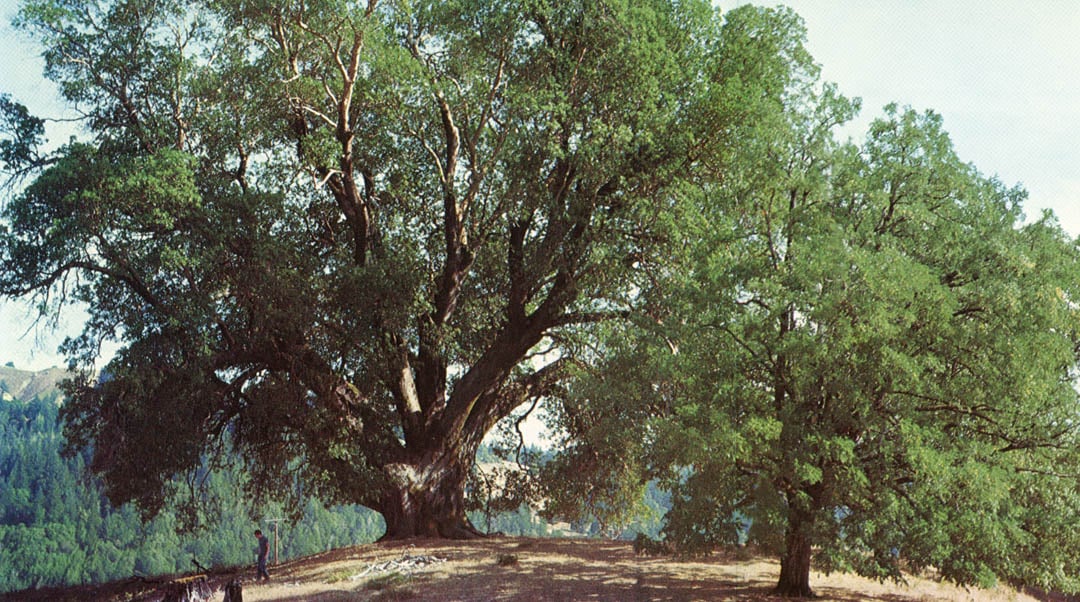

Contributor
- Topics: Archive, Plants You Need, Sustainable Gardening
Of the handful of madrones only two or three have found a place in gardens; the others deserve attention.
The name madroño was long used in Spain for the strawberry tree, a plant of the maquis, thickets, and rocky regions. When Father Juan Crespi first encountered our native west coast tree in 1769 he was the chronicler of the Portola expedition. He identified many madroños at the “lost bay” of Monterey. We know this tree as the madrone (Arbutus menziesii). The old Latin name Arbutus denotes “strawberry tree” and, according to Horace “idle men delight to lie under this tree.” Our native is found from British Columbia to San Diego County, California, and into the mountains of northern Baja California. It is also present in the foothills of the Sierra Nevada from Tuolumne through Shasta counties in California. This is the most massive and tallest growing of the madrones.
Always different throughout the year, either in bark, flowers, fruit or foliage, the coast madrone is a star at any season. In the fall, before the rains start, the bark is a matte gray-green with tessalations of brown where old bark has peeled. All winter the shining evergreen leaves with their white undersurfac...
READ THE WHOLE STORY
Join now to access new headline articles, archives back to 1977, and so much more.
Enjoy this article for FREE:
Articles: Calochortophilia: A Californian’s Love Affair with a Genus by Katherine Renz
If you are already a member, please log in using the form below.
Share:
Social Media
Garden Futurist Podcast
Most Popular
Videos
Topics
Related Posts

Ground Up Science for Greener Cities with Garden Futurist Dr. Alessandro Ossola
Spring 2023 Listen to the Podcast here. Alessandro Ossola is a scientist who gets very excited about the challenge of climate change allowing for an

Readying Urban Forests for Climate Realities with Garden Futurist Dr. Greg McPherson
Winter 2023 Listen to the Podcast here. “Going from the mow and blow to a more horticulturally knowledgeable approach to maintaining the landscape. And that

Welcome, Greywater, to the Garden
Summer 2022 Oh, summer: delightful warm air, tomatoes swelling on the vine, fragrant blooms on an evening stroll. When it’s warm and rainless, how is

Big Tree-Data and Big-Tree Data with Garden Futurist Matt Ritter
Summer 2022 Listen to the full Garden Futurist: Episode XV podcast here. We are in an environmental crisis right now in many parts of California










